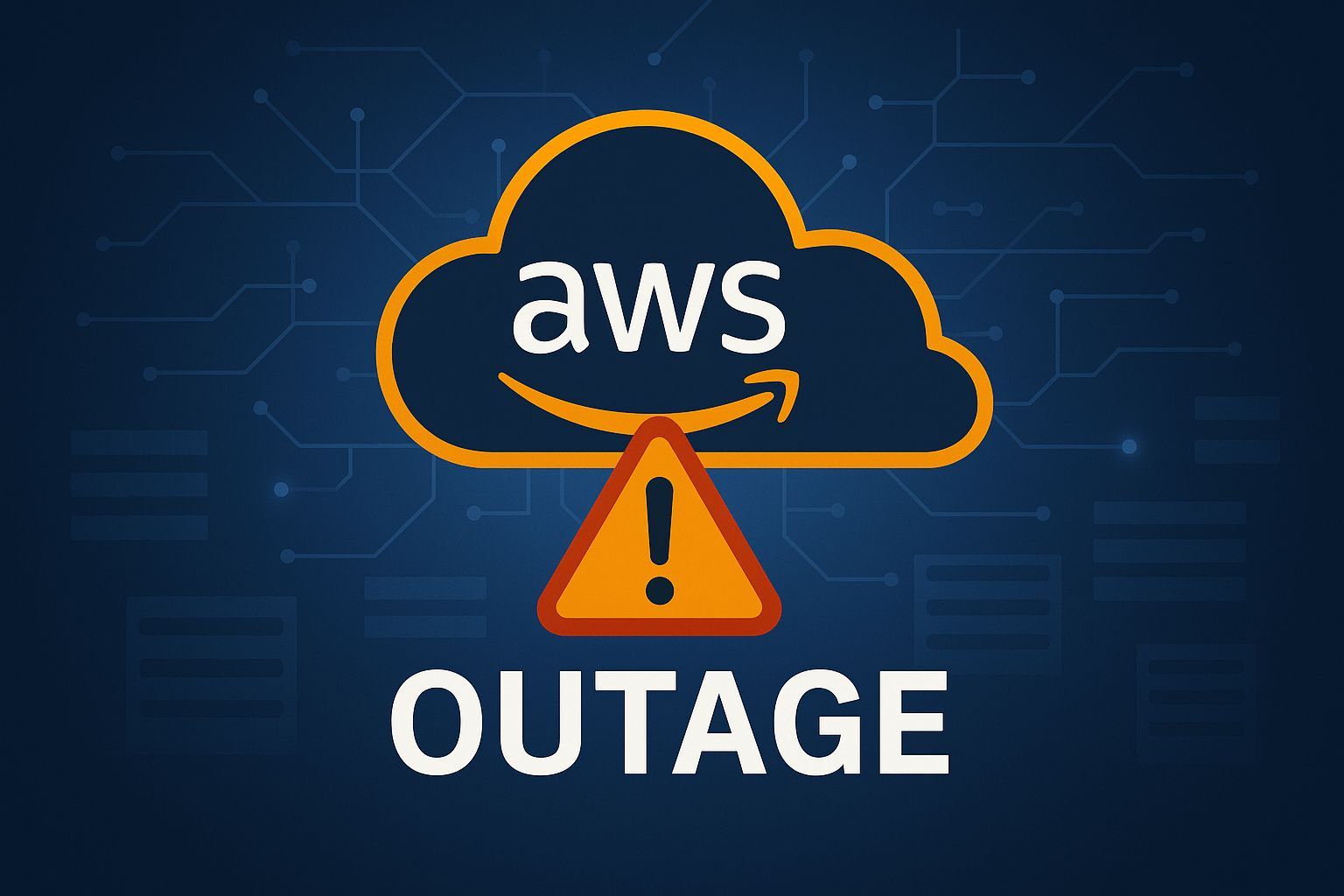AWS Outage 2025: Cloud Computing Chaos Across the Internet

Amazon Web Services outage causes widespread disruption
On October 20 2025, Amazon Web Services (AWS) suffered a massive operational issue that crippled cloud computing infrastructure worldwide. The event disrupted major online services from banking to streaming to airline systems.
Reports from The New York Times and The Wall Street Journal confirmed that the failure originated within AWS’s us-east-1 data region, triggering network congestion, API errors, and degraded performance across key systems such as Amazon Connect and Elastic Compute Cloud (EC2).
Users across the United States experienced connectivity issues, high error rates, and delays in loading apps and transactions. Even Prime Video users faced streaming interruptions until early signs of recovery appeared on the service health dashboard.
Which businesses were most affected by the AWS outage?
The Amazon Web Services outage caused widespread business interruptions for critical infrastructure across industries. United Airlines and Delta Airlines temporarily grounded or delayed flights as backend reservation systems went offline. Financial institutions experienced transaction slowdowns, while e-commerce sites struggled to process orders during peak hours.
Smaller enterprises that depended entirely on AWS infrastructure saw total downtime. Large tech firms leveraged disaster recovery protocols and parallel paths to migrate workloads to other regions. The outage revealed how dependent digital economies are on a handful of AWS services and online platforms.
Why did the AWS outage happen?
Internal network and DNS failure
AWS engineers later confirmed the incident was not caused by cyberattacks but by a malfunction within its internal network and domain name system (DNS) configuration. Misrouted requests and network connectivity issues caused significant API errors, preventing systems from spinning up new instances or balancing loads effectively.
This breakdown overwhelmed automated recovery tools and delayed updates on the AWS Service Health Dashboard, leaving customers uncertain about the duration of the outage.
A familiar pattern in cloud operations
The us-east-1 region, long considered a core pillar of AWS’s infrastructure, has seen repeated problems due to its enormous client concentration. When internal systems overloaded, error rates skyrocketed faster than elastic compute cloud could redistribute capacity, triggering cascading failures across dependent apps.
How did social media react?
Within minutes of the outage, frustrated users flooded social media platforms with screenshots and outage maps. Hashtags like #AWSDown trended globally as memes spread faster than official status updates.
Major outlets such as The Wall Street Journal and The New York Times reported that the event revealed society’s growing vulnerability to cloud computing disruptions. Many joked about enjoying an “offline evening,” while businesses faced real revenue losses.
What are the early signs of recovery?
By late afternoon, AWS reported early signs of recovery. Engineers implemented parallel paths for traffic rerouting and launched new instances in unaffected zones.
The service health dashboard displayed steady improvement as Amazon Connect, Prime Video, and EC2 workloads began returning to normal operations. However, partial connectivity issues persisted for some customers, and residual API errors remained high in certain clusters overnight.
By the following morning, AWS service operations were largely restored, though teams continued post-incident reviews to prevent a recurrence.
What does the AWS outage teach about cloud resilience?
The concentration risk
Experts emphasized the systemic danger of placing too much trust in a single provider or region. When AWS services in us-east-1 fail, businesses worldwide feel the impact. This cloud computing model offers speed but lacks the built-in redundancy of decentralized systems.
Building stronger disaster recovery plans
To mitigate future disruptions, companies must test disaster recovery processes and deploy workloads across multiple regions or cloud vendors. Key strategies include:
- Running critical apps on parallel paths across zones.
- Maintaining redundant DNS configurations.
- Implementing failover systems for essential cookies and sessions.
- Practicing backup drills for network connectivity issues.
Transparency during operational issues
Many users criticized AWS for delayed communication on its service health dashboard. In large-scale incidents, visibility matters as much as repair speed. AWS has since pledged to accelerate public updates and improve alert accuracy.
What’s next for Amazon Web Services?
AWS announced plans to enhance monitoring of its internal network, strengthen DNS redundancy, and improve detection of significant API errors. Analysts predict heavy investment in automation to prevent similar operational issues and to distribute workloads more evenly across its infrastructure.
Industry observers argue that the outage could prompt wider regulation of cloud computing providers as critical infrastructure, especially in the United States, where cloud dependency touches essential services.
Conclusion: Lessons from the AWS outage
The Amazon Web Services outage of October 2025 is a stark reminder that even the world’s largest cloud provider isn’t immune to failure. From Delta Airlines terminals to Prime Video streams, the incident exposed the delicate backbone of global online services.
Though early signs of recovery turned into normal operations, the message is clear: resilience and disaster recovery planning are essential in the modern cloud computing landscape. Downtime may be inevitable — but unpreparedness shouldn’t be.
About the Author

Miles Hollen | Editor
Miles is a tech writer and analyst passionate about the intersections of AI, gaming, and emerging technologies. With a sharp eye for innovation and a love of storytelling, he explores how breakthroughs in artificial intelligence are reshaping the gaming industry and the wider digital landscape. At GetJar.com, Miles delivers accessible insights, thoughtful reviews, and forward-looking commentary for readers eager to stay ahead in the world of tech.
